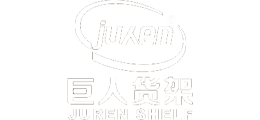

-
 National service hotline
National service hotline
- 400-082-1188
- Where are the shelves in the fresh food area mainly placed in supermarkets
- What are the structural characteristics of convenience store shelves
- What should be paid attention to in the maintenance of tobacco and liquor cabinets
- What products are mainly displayed on the shelves in the weighing area
- What are the characteristics of shelves in the fresh food area
What are the structural characteristics of convenience store shelves
source:www.gz1082.cn | Release time:2025年01月07日1. Small and flexible size
Height adaptation: The overall height is usually between 1.3 meters and 2.2 meters, much shorter than large supermarket shelves. This height not only makes it convenient for store clerks to easily restock and put on shelves without the need for climbing equipment, but also allows customers to see and get goods without looking up or bending down, improving shopping convenience.
Reasonable interlayer spacing: The interlayer spacing is mostly between 30-50 centimeters, which can be flexibly adjusted to meet the display needs of products at different heights. For example, lower layer spacing is used to place small items such as chewing gum and lighters, while slightly higher layer spacing is used to place bottled beverages and instant noodle boxes, making good use of vertical space.
2. Strong openness and display ability
Door free design: Most convenience store shelves are open, allowing customers to directly access products without opening the doors, reducing shopping obstacles and shortening purchase time, especially suitable for fast-paced consumption scenarios in convenience stores.
Multi sided visibility: Shelves are often made of transparent metal or glass laminates and side panels, allowing customers to see the displayed products from various angles, making it easy for customers to quickly scan and discover their favorite items, increasing product exposure opportunities.
3. Convenient combination splicing
Modular components: Convenience store shelves are generally composed of standardized columns, shelves, hooks, side panels, and other components. These components can be quickly assembled through simple connectors such as card slots, bolts, nuts, etc., making it convenient to disassemble and reassemble shelves at any time during store expansion and layout adjustments to adapt to new space planning.
Free layout: Thanks to its combination characteristics, the shelves can be freely arranged into various layouts such as straight lines, L-shaped, U-shaped, etc. according to the convenience store room type and area, fitting the different corners and aisle directions of the store, making full use of limited space.
4. Moderate weight-bearing capacity
Suitable for product weight: mainly used to carry common light and medium-sized items in convenience stores, such as snacks, daily necessities, small stationery, etc., with a load capacity of usually 50-150 kilograms per layer, which is sufficient for daily stocking and avoids the cost increase caused by excessive design.
Structural stability guarantee: Although the load-bearing capacity is limited, key structural components such as columns and beams of the shelves are designed with thickening and triangular reinforcement to ensure overall stability, prevent shelf deformation and tilting, and safeguard product safety and customer shopping safety.
5. Rich and diverse accessories
Display accessories: Equipped with a large number of auxiliary display accessories, such as hooks for hanging bagged food, diagonal shelves for placing newspapers and magazines, and stacking racks for displaying promotional items, convenience stores can flexibly change their product display methods to meet the needs of different seasons and promotional activities.
Identification accessories: equipped with price tag slots and classification identification card slots, which facilitate clear labeling of product prices and category information, assist customers in quick positioning, and also help store staff efficiently replenish and inventory.
Prev:
Where are the shelves in the fresh food area main…
Next:
What should be paid attention to in the maintenan…

 Micro signal:
Micro signal:

 official account
official account
 applet
applet
 wechat
wechat
 contact
contact
 phone
phone